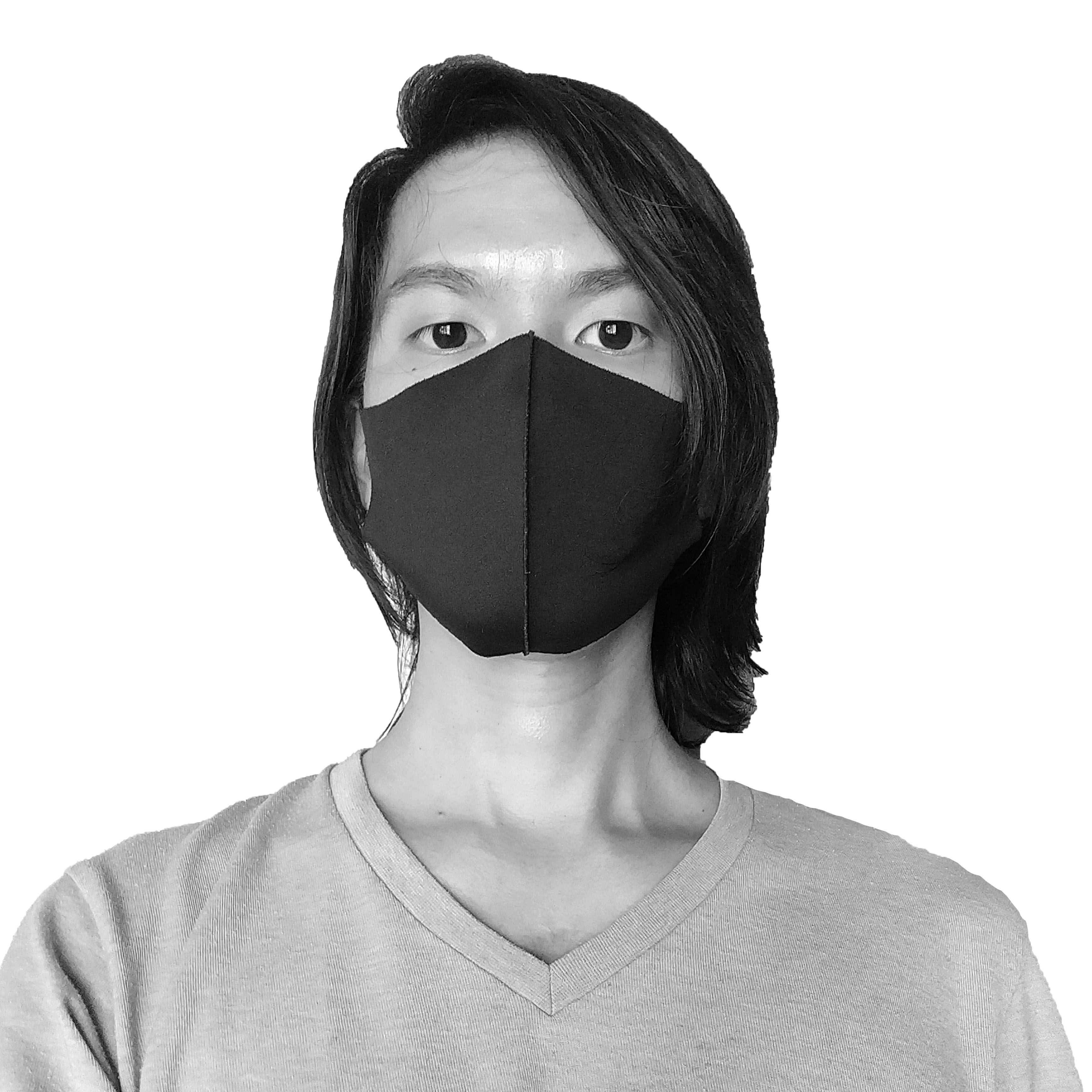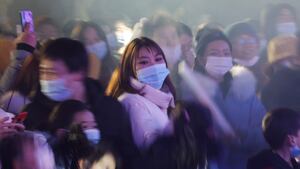After the World Health Organization’s coronavirus investigators were barred from entering China, the team landed in the country on Thursday—more than a year after the initial outbreak, long after key locations like the Huanan Seafood Wholesale Market were scrubbed, sanitized, and sealed up.
Chinese authorities say there were “visa clearance” issues, but one of Beijing’s conditions was to screen each expert put forward by the public health agency. Cover-ups and obfuscation by China’s officials have slowed down the response to COVID-19’s spread, and the quest to pinpoint the origins of SARS-CoV-2, the virus causing the deadly disease that has swept across the globe, may not yield consequential results.
Part of the initial outbreak seemed to have taken place at the Huanan wet market, where a variety of wildlife, like wolf cubs and peacocks, were bought and sold for their meat. Some of the first patients who were diagnosed with a mysterious, deadly disease, which was later designated as COVID-19, worked or had spent time there.
Now, the market is boarded up with decorative panels. Security personnel patrol the venue and tail anyone who wanders nearby. The market’s original vendors, who have been relocated to a different market, are twitchy when asked about the viral outbreak, but say that everything is fine now.
Viral Repetition
Wet markets have long been the cornerstone of food distribution in China. Meat, seafood, and vegetables are meant to be as fresh as possible—in some cases still alive—when they are sold. At some venues, poor hygiene is a problem, and regulations vary from city to city: the government of Shanghai, for instance, banned the sale of live poultry in 2014, but the practice is still common in many other parts of the country.
As wet markets in China were scrutinized, officials issued a temporary ban on the wildlife trade in late January 2020. Then, last month, the supreme court, justice ministry, and public security ministry of China all said they would root out unlawful procurement of wildlife and “sever the interests of the illegal wild animal trade.” Anyone who breaks the rules may be imprisoned for 10 years and the state may confiscate their personal property.
But exotic beasts were not always the cause of previous viral outbreaks in China. In the past quarter-century, viruses have made the jump from a range of animals to humans, and wiped out livestock and poultry that are part of China’s general food supply.
In 1997, the H5N1 avian influenza hit Hong Kong’s poultry, leading to a citywide cull of chickens and ducks. It made the leap into humans, killing at least 263 people in the next 12 years.
Between 2002 and 2004, SARS-CoV-1 leapt from palm civets—and likely other mammals—to humans, causing the severe acute respiratory syndrome, or SARS, killing nearly 800 people. Mask-wearing became a habit in some parts of the country.
Another avian flu, H7N9, has hit the population in waves since 2013. The WHO calls it an “unusually dangerous virus for humans,” particularly older men. So far, it has killed at least 600 people.
In 2018, swine fever broke out in China, leading to a cull of some 38,000 pigs in August that year alone.
Then, last June, when the world was grappling with the COVID-19 pandemic, a swine flu with “pandemic potential” was identified in China. It had already infected people who work with hogs.
Authoritarian Infodemic
The pattern is clear—in a series of viral outbreaks in China, one was bound to evolve and mutate in deadly ways, like SARS-CoV-2. Authoritarian cover-ups like what happened in China last year make it even more difficult for medical personnel to respond when each day, each hour, counts in their undertakings to save lives.
Throughout a year of what the WHO has termed an “infodemic,” the CCP has exerted an iron grip on information related to the coronavirus. Its confirmed case numbers were way off—last month, China’s public health authorities said the scale of the COVID-19 outbreak in Wuhan in early 2020 could be as many as 500,000 cases, nearly 10 times the official tally, all but confirming what medical professionals in the city said at the time in rejection to the case count announced by Chinese officials.
CCP leader Xi Jinping had an active role in suppressing research related to the coronavirus, particularly materials related to its origins, according to documents obtained by the Associated Press. Any information’s release had to be managed like “a game of chess,” a directive from Xi read.
One citizen journalist, Zhang Zhan, who recorded videos of conditions in Wuhan during lockdown, received a four-year prison sentence last month. After the verdict, Zhang’s mother spoke to a reporter from Hong Kong and said, “When she was little, I taught her to be honest, to tell the truth. Never did I think that I’d be doing her harm.”
Another citizen journalist, Chen Qiushi, was detained by authorities in Wuhan and placed in “quarantine” last February. He has not uploaded any more video reports after his run-in with state security, but has been released and placed under “supervised surveillance” at his parents’ home in Qingdao.
Chinese officials have propagated a series of conspiracy theories to cast blame on other nations. The deputy director of China’s foreign ministry information department, Zhao Lijian, suggested COVID-19 was the result of the U.S. army weaponizing a virus and releasing it in China. State media promulgated the narrative that frozen food shipped from other countries to Wuhan carried the virus and made China the site of the first viral outbreak.
And this month, China’s top diplomat, Wang Yi, tried to spread the blame during an interview with state-run media outlet Xinhua. “More and more research studies have shown that the pandemic is likely to have emerged in many places around the world,” Wang said.
‘The Big One’?
Hospital doctors in Wuhan that The Daily Beast spoke to recalled the stresses they felt on all fronts one year ago—slammed emergency rooms, a lack of personal protective equipment, general uncertainty about what they were dealing with, and a sense of fear that they found difficult to articulate.
At the time, they had to unbox PPE that was stored more than two decades ago during the SARS outbreak—the disease’s name was scrawled on plastic suits and gowns in black marker, slightly faded.
Some tried to follow the example of Dr. Li Wenliang and a few of his colleagues, who tried to warn the public in December 2019 about a novel, lethal disease that had no suitable treatment.
Dr. Li was arrested by police and accused of “spreading rumors.” Five months later, he died, unable to breathe as he succumbed to COVID-19.
For some of the doctors The Daily Beast spoke to, whether the wet market was the point where SARS-CoV-2 made the leap into human bodies hardly matters. The market was damp and dense, serving as a venue of transmission. While locating the origins of the virus is important, one doctor said, there were—and still are—“many environmental factors [in our cities] working in its favor.”
As horrific as the current pandemic is, the track record of viral outbreaks in China shows us there may yet be more. Last month, the WHO’s emergencies program executive director Mike Ryan warned that COVID-19’s devastation around the world may not be “the big one.”
But Ryan offered a glimmer of optimism and said this pandemic is a “wake-up call” that shows us “how to do things better: science, logistics, training, and governance, how to communicate better.”
Now, in Wuhan, the CCP communicates a message of triumph to the public. The government has staged an exhibition of dioramas, hospital beds, holographic projections of a medical team saving the life of a patient in critical condition, PPE, and mannequins of soldiers carrying medical supplies into the city.
As part of the show, Dr. Li Wenliang’s portrait is in a collection of photographs of “martyrs” in the fight against a horrific disease.
People in Wuhan feel like they are in the safest place in the world right now—perhaps rightly so.
Speaking to China’s 1.4 billion people at the end of 2020, Xi Jinping conveyed a self-congratulatory tone: “We overcame the impact of the pandemic and made significant achievements in both controlling the coronavirus and pushing economic developments.”
But that disposition is not shared everywhere in China. Six hundred miles north of Wuhan, 22 million people have been placed under renewed lockdown.
The hows and whys of SARS-CoV-2’s quick path to ravaging human bodies remain unaddressed—to the detriment of our preparedness for the next novel and deadly plague.









